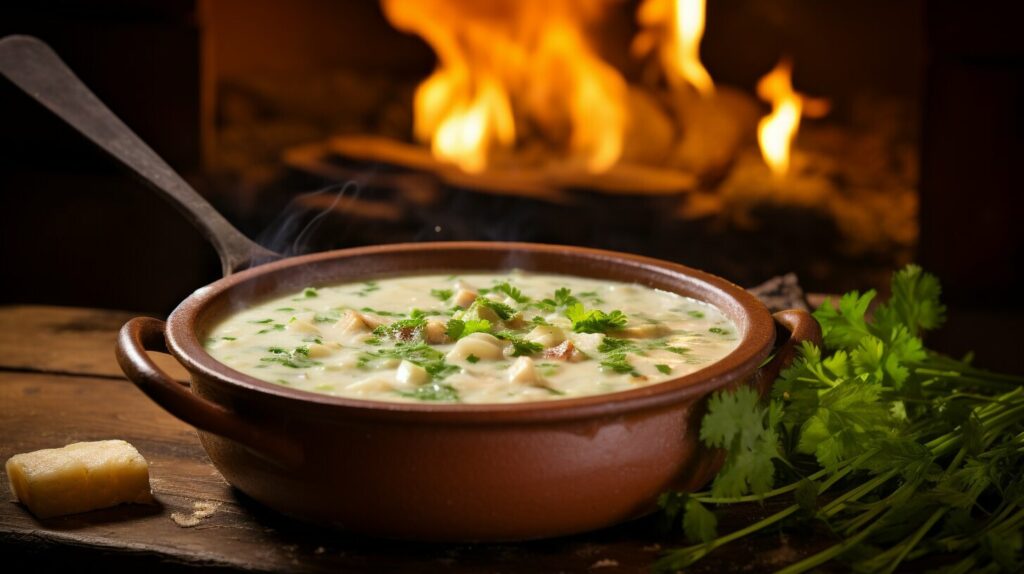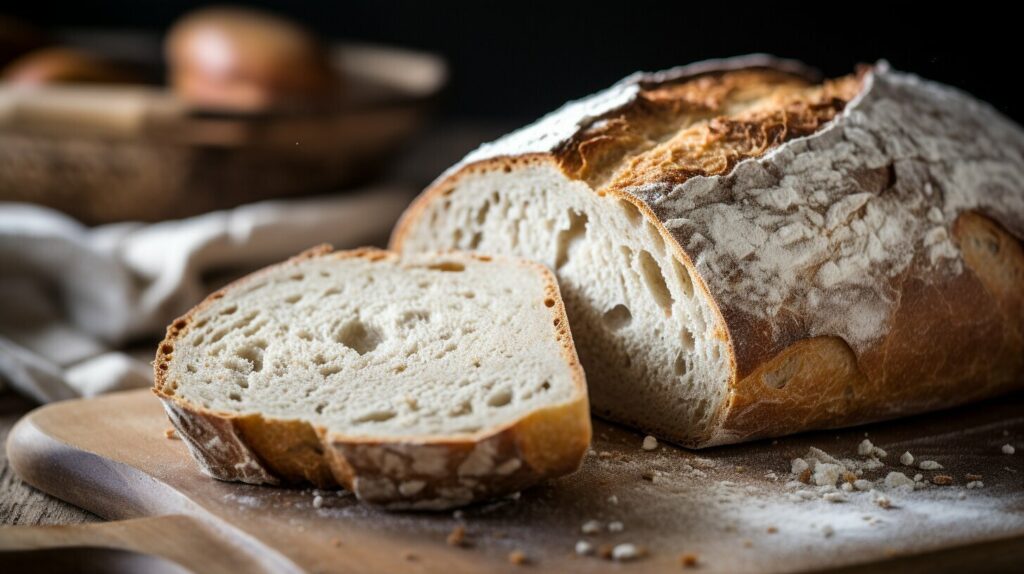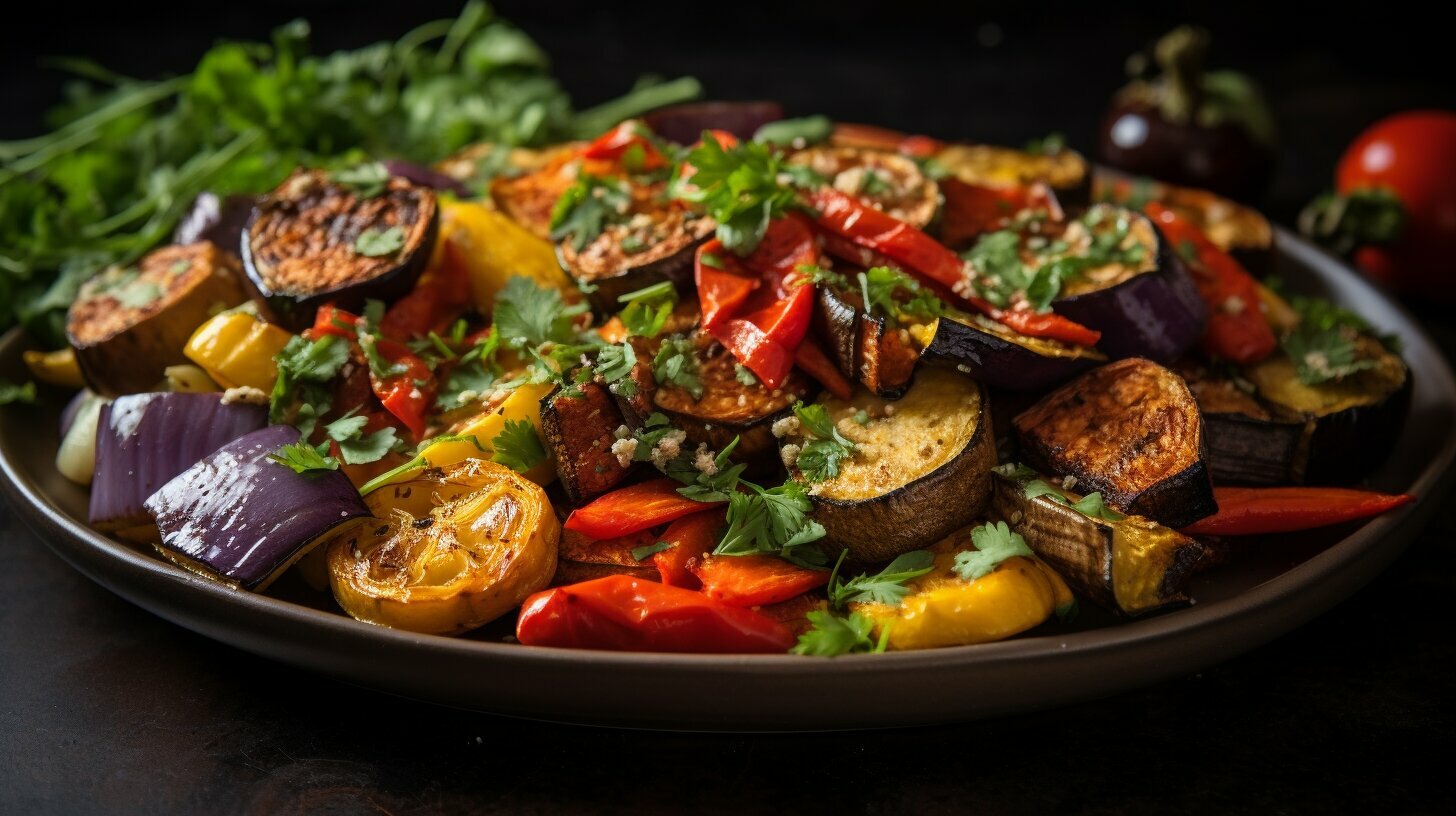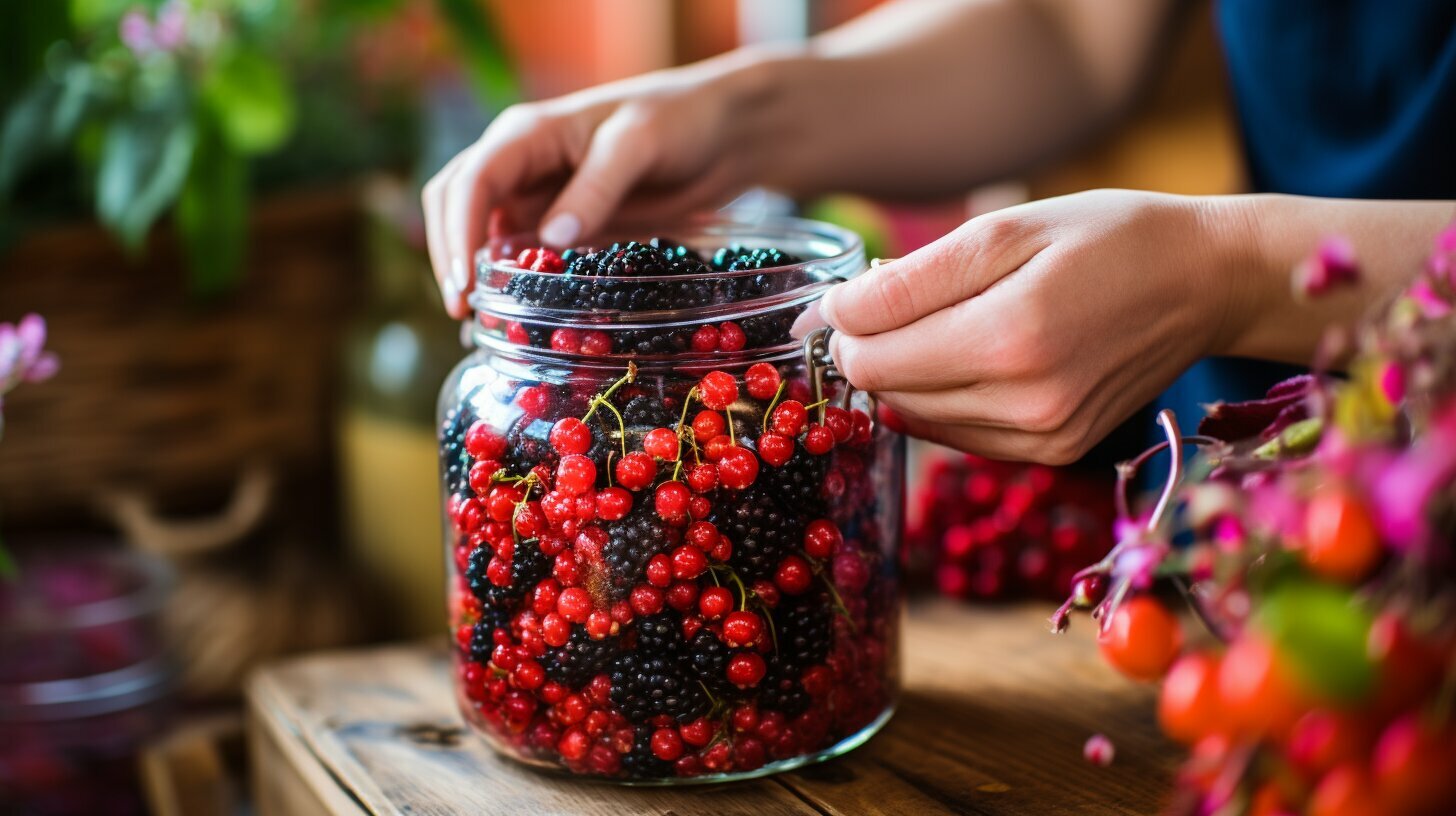Have you ever heard of using cattails in your cooking? These often-overlooked wetland plants are actually a versatile and nutritious ingredient that can add unique flavors and textures to your meals. Cattail recipes have been used for centuries in traditional and primitive cooking techniques, and they are gaining popularity in sustainable and foraging-based cooking.
Incorporating cattails into your cooking is not only a delicious choice, but it’s also environmentally friendly. These wild edible plants are abundant in marshlands, making them a sustainable and natural ingredient for your recipes.
Disclosure: When you buy through links on our site, we may earn an affiliate commission.
Whether you’re interested in foraging for cattails yourself or simply trying out new recipes in the kitchen, there are plenty of options to explore. From savory soups and stews to sweet desserts and refreshing beverages, cattails are a versatile ingredient that can elevate your cooking to new heights.
Key Takeaways
- Cattail recipes are a unique and nutritious addition to your culinary repertoire.
- Cattails are wild edible plants that are abundant in marshlands.
- Incorporating cattails into your cooking is an environmentally friendly choice.
- Cattail recipes have been used in traditional and primitive cooking techniques for centuries.
- From savory dishes to sweet desserts and refreshing beverages, there are plenty of cattail recipes to explore.
The Benefits of Cooking with Cattails
If you’re looking for a unique and sustainable ingredient to add to your recipes, cattails are an excellent choice. These wetland plants are not only versatile, but they also offer a range of nutritional benefits. Here are some of the reasons why you should consider cooking with cattails:
- Cattails are a sustainable choice for cooking since they grow abundantly in marshlands and wetlands. By incorporating them into your recipes, you are supporting sustainable agriculture and reducing your environmental impact.
- These marshland plants are packed with nutrients such as protein, fiber, and essential minerals like iron and magnesium. By incorporating cattails into your meals, you are adding a nutritious element to your diet.
- Cattails are a versatile ingredient that can be used in a range of recipes from soups and stews to bread and desserts. You can experiment with different cooking techniques and flavor combinations to create unique dishes that showcase the flavors of this marshland vegetation.
When it comes to sustainable cooking, incorporating wetland plants like cattails into your recipes is a great way to reduce your environmental impact while also enjoying the nutritional benefits of these unique ingredients.
Next, we’ll explore the tips and precautions for safely foraging for cattails so that you can start incorporating this versatile ingredient into your cooking.

Foraging for Cattails: Tips and Precautions
If you’re interested in incorporating cattails into your cooking, foraging for them can be a rewarding and sustainable experience. Here are some tips to make sure you forage safely:
- Look for cattails in wetland areas such as swamps, marshes, and along the edges of ponds and streams.
- Make sure you have permission to forage in the area you’ve chosen.
- Only harvest cattails that are at least 2-3 feet tall and have a brown, cigar-shaped head.
- Avoid harvesting cattails from polluted water sources or areas that may have been sprayed with pesticides or other chemicals.
- Wear gloves and protective clothing when harvesting cattails to avoid contact with any harmful substances or insects.
- When harvesting, only take a few cattails from each patch to ensure their continued growth and reproduction.
- Inspect the cattails carefully for insects or other contaminants before using them in your recipes.
Remember, foraging for wild edible plants like cattails requires knowledge and caution. Always make sure you’re correctly identifying the plant and follow best practices to avoid any potential hazards.

Types of Cattails:
There are two types of cattails commonly found in North America: the broad-leaved cattail (Typha latifolia) and the narrow-leaved cattail (Typha angustifolia). The broad-leaved cattail is more commonly found and has wider leaves than the narrow-leaved cattail. The two varieties have slightly different flavors and textures, so it’s worth trying both to see which you prefer.
Traditional and Primitive Cattail Cooking Techniques
Throughout history, cattails have been a staple in traditional food. Native Americans have long used this marshland vegetation in their diets, incorporating these nutrient-rich plants into various dishes. Today, cattails can still be used in many ways, and their unique flavor can be brought out using both traditional and primitive cooking techniques.
Boiling and Steaming
One of the simplest ways of cooking cattails is by boiling or steaming them. Boiling cattails in a pot of water with a dash of salt for about ten minutes can soften and tenderize them. The tender cattail shoots can then be added to soups, stews, or other dishes. When steaming cattails, cook them for about 15-20 minutes, or until they become tender. The steamed cattails can be served with melted butter or added to salads.
Roasting and Frying
Cattail roots can be roasted on the coals of a fire, producing a starchy and nutty flavor. Peel the outer layer of the root, wash it, and then roast it for about 20-30 minutes. You can also fry the cattail roots in a pan with a little bit of oil. Additionally, young cattail shoots can be fried to create cattail fritters or tempura.
Baking and Grilling
Cattail pollen can be used as a substitute for flour in baking. It has a slightly sweet flavor and can be added to bread, muffins, and other baked goods. Cattail leaves can also be used as a wrapper for food before grilling, adding a unique flavor to grilled meats or fish.
Smoking
If you have access to a smoker, cattail leaves can be used as a wrap for meat or fish before smoking. The smoke from the cattail leaves will infuse a unique flavor into the food.

“Cattails are a versatile ingredient that can be used in many ways. Their unique flavor can be brought out using traditional cooking techniques and can add a new dimension to your meals.”
Savory Cattail Soups and Stews
Warm up your taste buds with flavorful and nutritious cattail soups and stews. Cattails are a unique ingredient that brings a touch of marshlands to your dish, perfect for those who love to experiment with natural ingredients and foraging recipes.
Here’s a simple yet delicious recipe for Cattail Chowder:

| Ingredients: | Instructions: |
|---|---|
|
|
Try adding other natural ingredients like potatoes, carrots, and herbs to create your own unique cattail soup or stew. With its mild flavor, cattails are a versatile ingredient that can blend well with other flavors and spices.
Cattail Side Dishes and Snacks
Looking for some flavorful and nutritious side dishes or snacks to add to your cattail recipe collection? Look no further! These recipes are easy to make and are perfect for any occasion.
Crispy Cattail Fritters
These crispy cattail fritters are the perfect appetizer or snack. Made with fresh cattail shoots and a blend of natural ingredients, they are sure to satisfy your taste buds. Simply mix the ingredients, form into patties, and fry in hot oil until golden brown. Serve with your favorite dipping sauce for a delicious and nutritious snack.
Creamy Cattail Salad
This creamy cattail salad is the perfect side dish for any meal. Made with fresh cattail shoots, mixed greens, and a creamy dressing, it brings a unique flavor and texture to your plate. Mix the ingredients together and top with a sprinkle of nuts or seeds for an added crunch.
Cattail Crostini
| Ingredients | Instructions |
|---|---|
| 1 baguette, sliced into rounds | Preheat oven to 375°F. Brush the bread with olive oil and sprinkle with salt. Bake for 8-10 minutes or until crispy. |
| 1 cup cooked and chopped cattail shoots | Top each crostini with a spoonful of chopped cattail shoots. |
| 1/2 cup crumbled goat cheese | Top each crostini with a sprinkle of crumbled goat cheese. |
| 2 tbsp chopped fresh herbs (such as chives or parsley) | Sprinkle with chopped fresh herbs and serve. |
Cattail Chips
Looking for a healthy alternative to potato chips? Try these crispy cattail chips! Cut fresh cattail shoots into thin slices and toss with a drizzle of olive oil and a sprinkle of salt. Spread the slices on a baking sheet and bake at 350°F for 15-20 minutes or until crispy. Serve with your favorite dip or enjoy them on their own.

Cattail Breads and Baked Goods
Do you love baking? If so, you’ll be thrilled to discover the versatility of cattails in bread and baked goods. From muffins to bread loaves, there are numerous ways to incorporate these natural ingredients into your baked treats.
One straightforward and delicious recipe to try is cattail cornbread. Cornmeal, flour, and baking powder mixed with cattail pollen, a unique, flavorful ingredient, will create a fantastic accompaniment to any meal.
If you’re feeling adventurous, experiment with cattail root flour, which can be used to replace wheat flour in recipes. Additionally, cattail catkins, the plant’s flowering spike, can add a crunchy texture to biscotti or a sweet glaze on a cake.
Cattail Bread Recipe
Here’s a simple recipe for cattail bread:
| Ingredients | Instructions |
|---|---|
| 2 cups cattail pollen | Mix all ingredients together in a large bowl, except cattail pollen. |
| 1 cup flour | Add cattail pollen to the mixture and stir until well combined. |
| 1 tbsp baking powder | Pour the mixture into a greased loaf pan. |
| 1 cup milk | Bake at 350°F for 30-35 minutes or until golden brown. |
| 1/4 cup oil or melted butter | Allow the bread to cool before serving. |
| 1/4 cup honey (optional) |
Whether you’re baking with cattail flour, pollen, or catkins, these natural ingredients are sure to impress your taste buds while adding a unique twist to your favorite baked goods.

Sweet Cattail Desserts
Indulge your sweet tooth with these mouth-watering cattail desserts. From cakes to fritters, these natural ingredient desserts are sure to impress.
Cattail Honey Cake

This cake combines the sweet flavor of honey with the unique taste of cattails.
| Ingredients | Method |
|---|---|
| 2 cups all-purpose flour | Preheat oven to 375°F (190°C). Grease an 8-inch baking dish. |
| 1 cup honey | In a large bowl, mix together the flour, honey, and cattail pollen. |
| 1/2 cup cattail pollen | In a separate bowl, beat the eggs. Add the wet ingredients to the dry ingredients and mix well. |
| 2 eggs | Pour the batter into the greased baking dish and bake for 30-35 minutes or until a toothpick comes out clean. |
Cattail Fritters with Sweet Glaze
These delicious fritters are fried to perfection and topped with a sweet glaze, making them a perfect dessert or snack.
| Ingredients | Method |
|---|---|
| 1 cup all-purpose flour | Mix the flour, cattail pollen, baking powder, salt, and sugar in a large bowl. |
| 1/2 cup cattail pollen | In a separate bowl, whisk together the milk, eggs, and vanilla. |
| 1 tsp baking powder | Add the wet ingredients to the dry ingredients and mix well. |
| 1/4 tsp salt | Heat oil in a frying pan over medium-high heat. Drop spoonfuls of batter into the hot oil and fry until golden brown. |
| 1/4 cup sugar | In a small bowl, mix together the powdered sugar, milk, and vanilla to make the glaze. |
| 1/2 cup milk | Drizzle the glaze over the fritters and serve hot. |
| 1 tsp vanilla extract | |
| Oil (for frying) | |
| Powdered sugar (for glaze) |
Get creative with your cattail desserts and try experimenting with different flavors and ingredients to make your own unique treats.
Beverages with Cattail Infusions
When it comes to incorporating cattails into your meals, don’t forget about the drinks! Cattails can add a unique flavor to your favorite beverages, making them even more refreshing and delicious.
To make a cattail infusion, start by harvesting fresh cattail shoots from a clean, unpolluted area. Rinse them thoroughly and chop them into small pieces. Then, place the pieces in a jar and cover them with boiling water. Let the mixture steep for 20-30 minutes before straining out the solids.
Here are a few ideas for incorporating cattail infusions into your favorite beverages:
- Iced Tea: Brew a batch of your favorite tea, such as black tea or green tea, and add a cattail infusion for a unique twist. Sweeten with honey or sugar to taste.
- Lemonade: Mix freshly squeezed lemon juice with water and sweeten to taste. Add a splash of cattail infusion for a refreshing and slightly tart flavor profile.
- Cocktails: Get creative with cattail-infused cocktails. Try mixing cattail infusion with your favorite liquor, such as vodka or gin, and adding fresh herbs or fruit for extra flavor.
With their natural sweetness and refreshing flavor, cattails are a great addition to any beverage. Experiment with different combinations and find your new favorite drink!

Conclusion
Now that you’ve explored the world of cattail recipes, it’s time to get cooking. Incorporating cattails into your meals not only adds a unique and delicious twist, but it also offers several nutritional and environmental benefits. By foraging for cattails and using wetland plants in your cooking, you’re making a sustainable choice that supports the local environment.
Try your hand at traditional and primitive cooking techniques, experiment with savory soups and stews, or indulge your sweet tooth with cattail desserts and baked goods. Don’t forget about cattail-infused beverages to quench your thirst. The possibilities are endless when it comes to cooking with cattails.
By incorporating cattail recipes into your culinary repertoire, you’re embracing a sustainable and environmentally friendly way of cooking while also expanding your palate and trying something new. So go ahead, get creative in the kitchen, and enjoy the delectable flavors of this versatile marshland plant.
FAQ
What are some common cattail recipes?
Some common cattail recipes include cattail soups, stews, side dishes, snacks, breads, baked goods, desserts, and beverages.
Are cattails safe to eat?
Yes, cattails are safe to eat when properly foraged and prepared. However, it is important to ensure that the cattails come from a clean and uncontaminated source.
How do I forage for cattails?
When foraging for cattails, look for mature plants with brown seed heads. Cut the stalks close to the base and remove any outer leaves. It is important to avoid picking cattails near polluted water sources.
Can I eat all parts of the cattail plant?
While most parts of the cattail plant are edible, the young shoots, rootstocks, and immature flower heads are the most commonly consumed parts.
Are there any precautions to take when foraging for cattails?
Yes, when foraging for cattails, always obtain permission if you are on private property and avoid harvesting in protected areas. It is also crucial to properly identify cattails to avoid mistaking them for poisonous plants.
How do I prepare cattails for cooking?
To prepare cattails for cooking, remove the outer leaves and rinse the stalks thoroughly. Trim the roots and any remaining green parts. You can then boil, steam, roast, fry, or incorporate cattails into various recipes as desired.
What are the nutritional benefits of cooking with cattails?
Cattails are rich in vitamins A, B, and C, as well as minerals such as potassium and magnesium. They are also a good source of dietary fiber and contain essential amino acids.
Can I substitute cattails for other ingredients in recipes?
Depending on the recipe, cattails can be a unique substitute for other vegetables, grains, or even meats. However, it is important to consider the flavor and texture of cattails when making substitutions.
Are cattail recipes suitable for vegans and vegetarians?
Yes, cattail recipes can be suitable for vegans and vegetarians as they are plant-based. However, it is important to check individual recipes for any non-vegan or non-vegetarian ingredients that may be included.
Where can I find more cattail recipes?
You can find more cattail recipes online, in cookbooks dedicated to foraging or wild edible plants, or through local culinary organizations and workshops that focus on sustainable cooking and wild ingredients.




